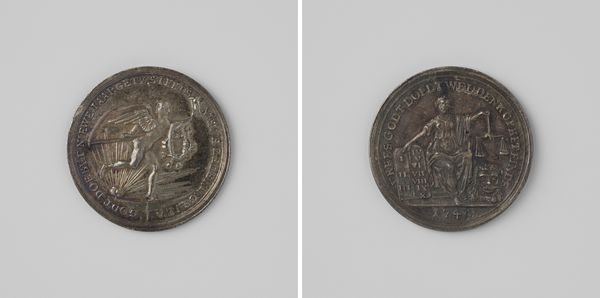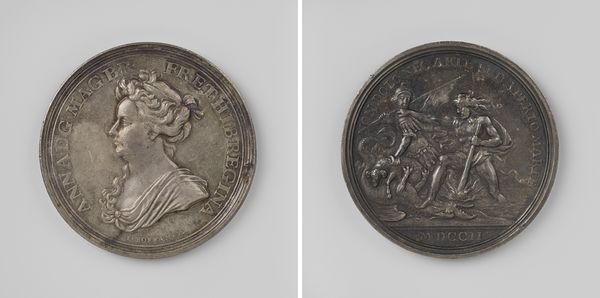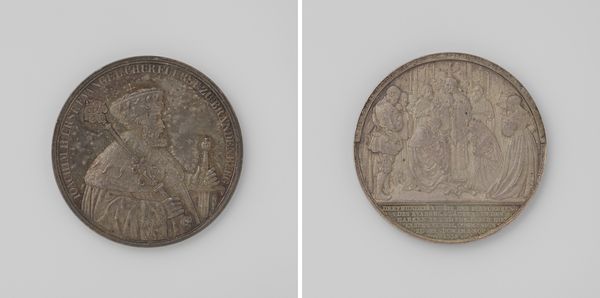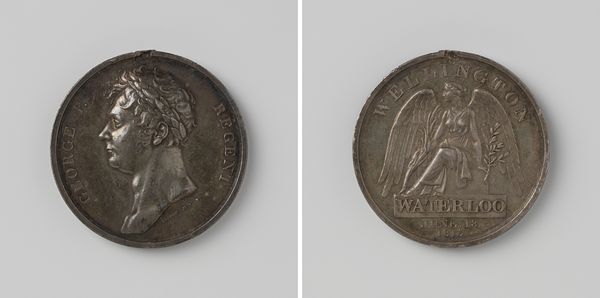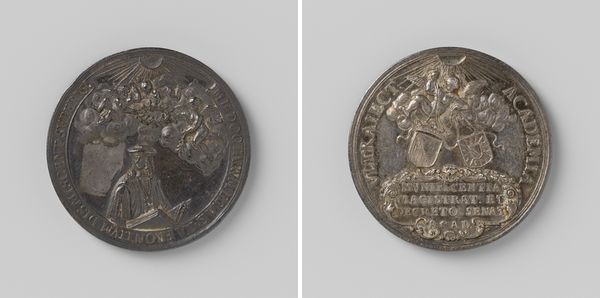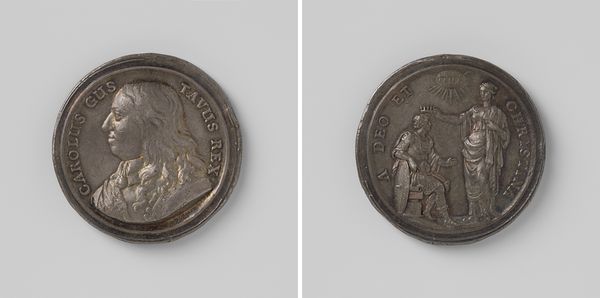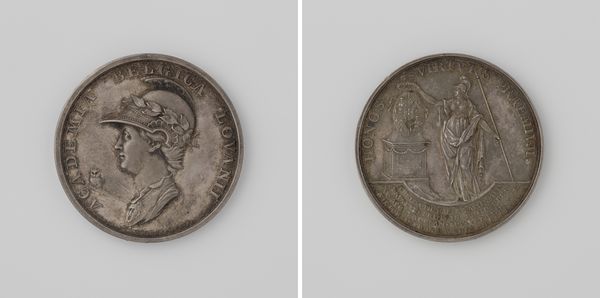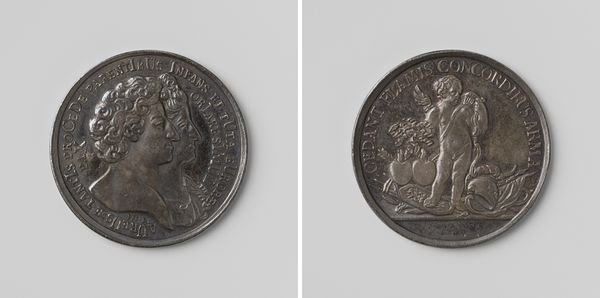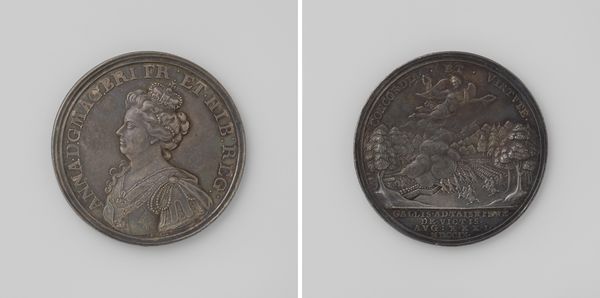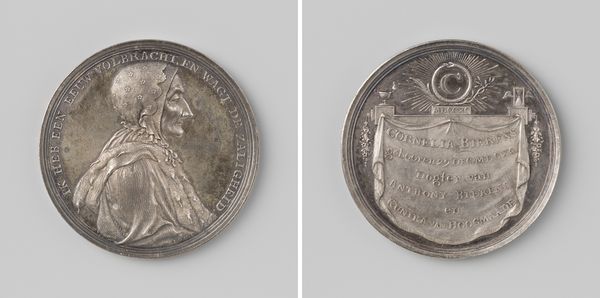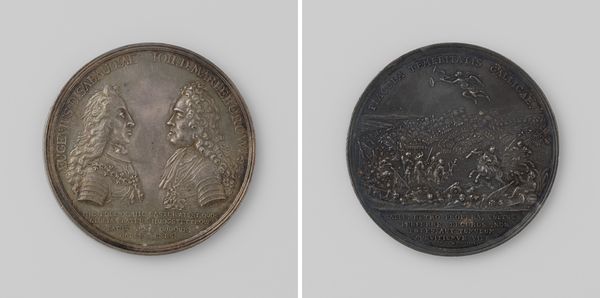
print, metal, sculpture, engraving
#
portrait
#
baroque
# print
#
metal
#
sculpture
#
sculptural image
#
sculpture
#
history-painting
#
engraving
Dimensions: diameter 4.3 cm, weight 37.98 gr
Copyright: Rijks Museum: Open Domain
Curator: This medal, created by Jan Boskam in 1702, depicts the naval Battle of Vigo Bay, specifically the burning of the French and Spanish fleets. It’s made from metal, an engraving. What strikes you first about it? Editor: The dynamism captured on such a small surface is truly remarkable. Despite its size, the artist conveys the chaotic energy of naval warfare, the conflagration consuming the ships, with impressive clarity. Curator: Indeed. Notice how Boskam employs distinct visual registers on either side of the medal. On one face, the stoic portrait of Queen Anne; the reverse depicting the very visceral battle, full of fire and active destruction. Editor: Queen Anne is clearly presented as a figure of assured authority and grace. The laurel leaves seem a symbolic attempt to tie Anne back to ideas of antiquity and victory as well. Her association to the war is plain here. But what’s more evocative, the ships aren’t merely burning, they appear as offerings ablaze on some grand, pyre. Curator: An interesting reading. Semiotically, we can view this as a representation of power relations. The naval battle isn’t merely a depiction of historical events, it also is propaganda—demonstrating English naval dominance in contrast to her foes. The Queen's profile projects regal composure despite wartime turmoil. The circular nature of the metal draws visual and conceptual parallels between power and control of lands and seas. Editor: Absolutely, these emblems of naval power engulfed in flames become icons themselves. Fire holds a rich symbolic range across cultures—destruction, purification, even transformation. Does Boskam hint the end of one era while another dawns under Anne’s command? Curator: Perhaps. It's equally possible Boskam used established visual tropes from baroque art which utilized a high degree of emotive energy, rich detail and stark contrasts in light to communicate dramatic events. Editor: Thank you for highlighting the piece's artistic and political context. Curator: Thank you, it was most informative to consider the layers of symbolism interwoven with art's aesthetic properties here.
Comments
No comments
Be the first to comment and join the conversation on the ultimate creative platform.
